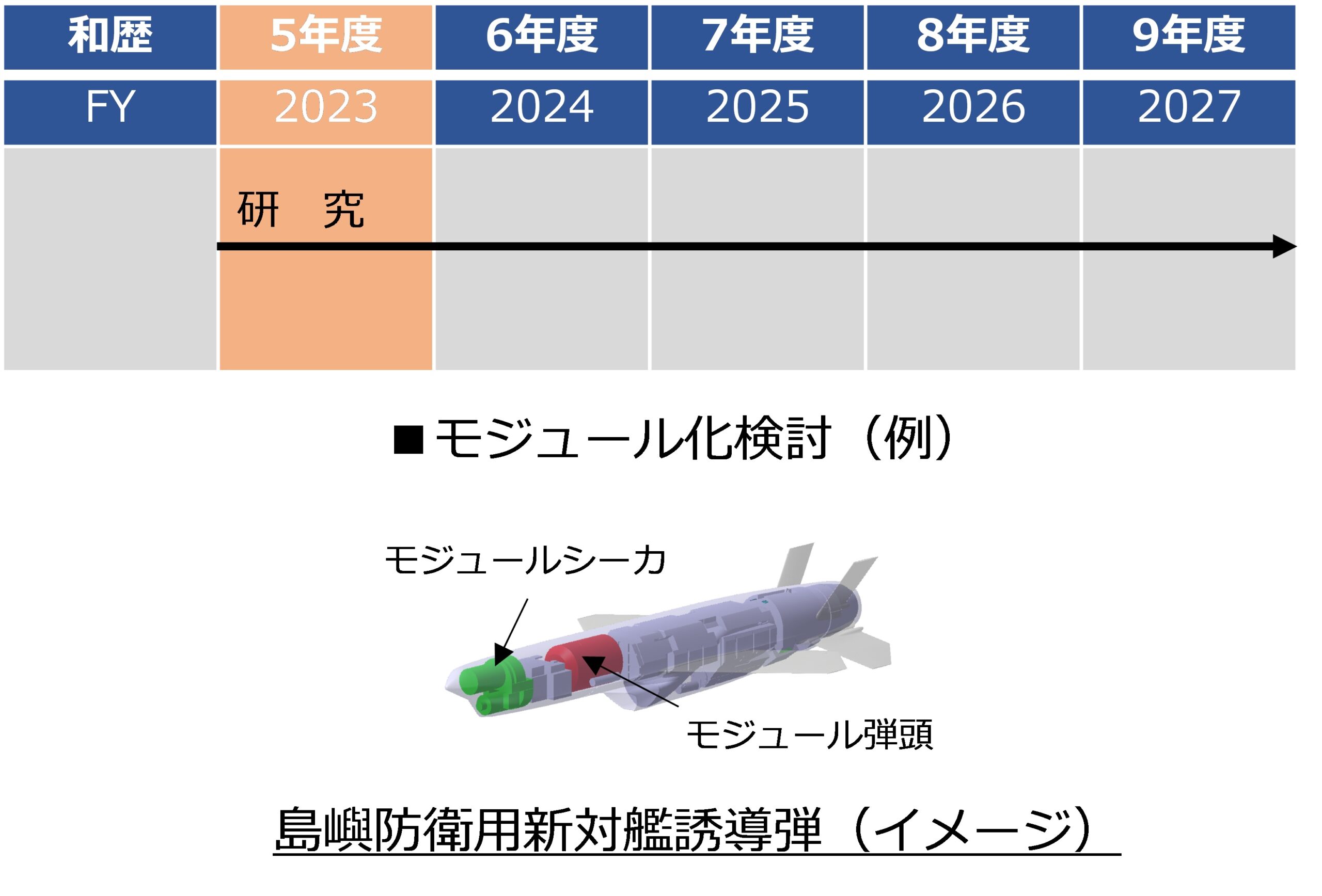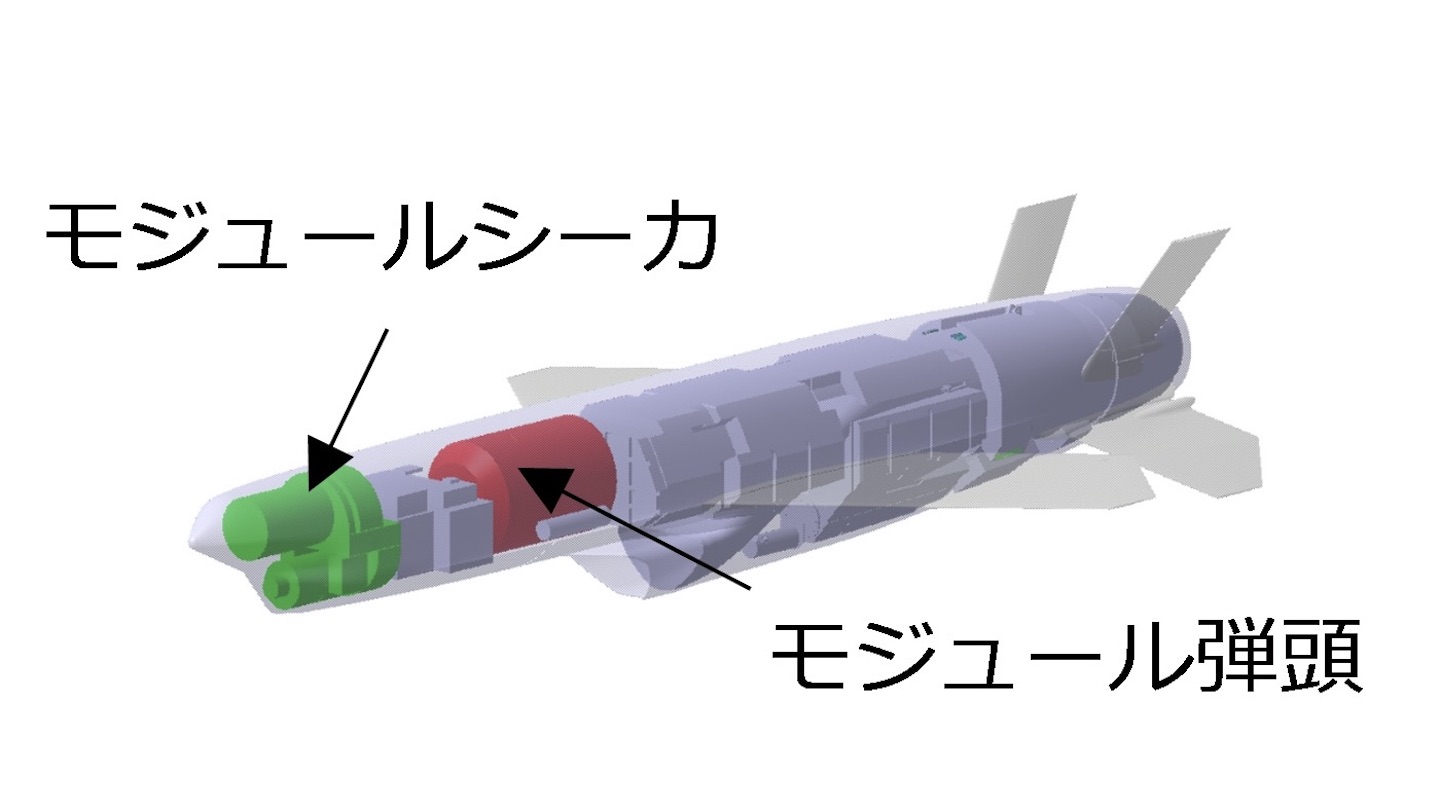Japan has kicked off a project to field a new coastal, anti-ship cruise missile as part of the country’s Defense Buildup Program. The “new SSM [surface-to-ship missile]” represents one of many new missile projects, including hypersonic missiles, recently announced by Japan’s Ministry of Defense specifically for “island defense.” It’s likely the new missile will be used on Japan’s southern islands, including around the Senkakus, to deter Chinese military aggression against what is known as the First Island Chain.
According to a press release from the Japanese MoD dated June 6, the contract for the new cruise missile was awarded to Kawasaki Heavy Industries (KHI) on June 2. As the press release notes, the research and development period for the missile, centered on “elemental technologies for new anti-ship guided missiles for island defense,” stretches from 2023 through 2027. Local Japanese media reports on the new cruise missile – which the country has been researching for several years – suggest it will have a range of 2,000 kilometers (just over 1,242 miles). While the press release does not stipulate the value of the contract, Japan’s Fiscal Year 2023 budget had earmarked $257 million for research on a new multi-mission anti-ship missile, leading to a prototype featuring a low radar cross-section (stealthy).
As part of the press release, the Japanese MoD also provided the first cutaway illustration of the missile titled “modularization study.” The illustration reveals two separate sensors within the missile’s nose as well as the location of a “modular warhead.” The artwork also shows the air-breathing missile with a pair of pop-out wings and with a set of four tail fins/stabilizers behind.

Of course, it should be noted that KHI has been developing a prototype for a new long-range cruise missile for several years, in accordance with Japan Self-Defense Forces (JSDF) specifications. A scale model of the company’s “island defense anti-ship missile” was unveiled in March at the DSEI Japan 2023 exhibition.
KHI’s prototype missile certainly seems to match the general characteristics of the “new SSM.” Quoting KHI officials, Naval News reports that KHI’s “island defense anti-ship missile” is designed for high maneuverability over long ranges. It will be able to be employed from warships, aircraft, and land-based launchers, and could be modified to enable launch from submarines. In terms of its engine, KHI’s missile will be fitted with the KJ300, a new turbofan engine currently under development by the company.
Moreover, as Janes reports, KHI’s missile will be guided by an inertial navigating system (INS) and global positioning system (GPS) during its cruise phase, and will use an infrared (IR) and/or a radio frequency (RF) seeker for terminal guidance. Pairing infrared and radar seekers will make the missile far less vulnerable to countermeasures, such decoys and jamming (both IR and RF), and will significantly improve its probability of a kill.
The “island defense anti-ship missile” has a length of between six and ten meters (around 20 to 33 feet) and will be able to achieve a subsonic speed of Mach 0.8. KHI also stresses the missile will be capable of other mission sets due to its modular design, allowing for different payload configurations. These could include land attack, electronic warfare, and even reconnaissance configurations.
Japan has been pushing to produce new land attack cruise missiles, as well as anti-ship cruise missiles, capable of similar ranges to Tomahawk Land Attack Missiles, or TLAM, since at least 2017. The latest Block IV variant of the American-made TLAM, has a range of approximately 1,000 miles. This push was originally in large part a response to growing tensions on the Korean Peninsula, as North Korea has continued to develop its nuclear weapon and missile capabilities, although China was also a factor. The country has also looked to introduce a long-range cruise missile capability to its existing submarine fleet, or future submarines. Those missiles, as The War Zone has indicated, would have a range of over 620 miles, and would be fielded in the latter half of the 2020s.
Indeed, Japan has also looked to extend the range of its Type 12 surface-to-ship missiles used for coastal defense. The “upgraded” version of that missile is expected to have a range of at least 900 kilometers (just under 560 miles), reaching a maximum of 1,200 kilometers (just over 745 miles). This is a sizeable increase compared to the 200 kilometer (just over 124 mile) range of the original Type 12 missile.

Most recently, the country has moved forward with efforts to bulk-purchase 400 Tomahawk cruise missiles from the U.S., which began in April of this year.
Yet the designation of a “new SSM” specifically for “island defense” points to disputes with both China over islets in the East China Sea and with Russia over Sakhalin. As The War Zone has noted in the past, Japan has a particular stake in protecting the disputed islands within the First Island Chain – an area of the Pacific inside a boundary formed by the first line of archipelagos out from mainland East Asia – such as the Senkaku Islands. These islands would likely be targeted in a potential conflict with China.

Clearly, Tokyo believes it needs to invest in weapons such as cruise missiles as part of a wider strategy to deter Chinese military aggression through that country’s growing naval capabilities. More broadly, Japan has committed to a record defense budget for Fiscal Year 2023, amounting to around 7 trillion yen (over $50 billion), in the face of growing tensions with its regional neighbors North Korea and China. Japan has been extending its military capabilities in other notable areas, it should be mentioned, including the development of aircraft carriers and hypersonic missiles.
Of course, this calls into question just how far Japan remains a “pacifist” nation, with the country’s constitution ruling out offensive action. Indeed, Japan has emphasized its procurement of cruise missiles as acts of “self defense” in the recent past to reflect this. Yet in 2014, Japan said Article 9 of the constitution wouldn’t apply to “collective self-defense” or aiding allies under attack, signaling a possible change of posture from Tokyo. There has also been talk in recent years of Japan doing away with Article 9 altogether, with the debate growing in light of threats from China and North Korea.
Considering its present defense priorities, Japan’s decision to field a new coastal anti-ship cruise missile further underscores the country’s push towards a more assertive defensive posture.
Contact the author: oliver@thewarzone.com
